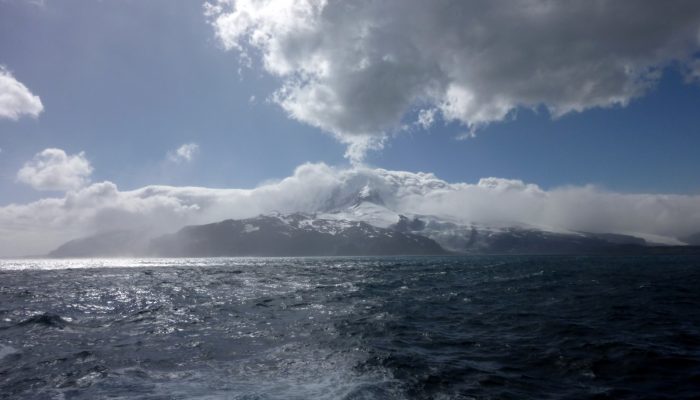
Perhaps a bold claim, but at over 4,000 km away from Australia and 4,200 km from South Africa, Heard Island is unquestionably hard to reach.
The faraway and little know place is part of a group of volcanic islands known as HIMI (comprised of the Heard Island and McDonald Islands), located in the southwest Indian Ocean. Shrouded in persistent bad weather and surrounded by the vast ocean, Heard Island, the largest of the group, was first sighted by the merchant vessel Oriental in 1853.
Its late discovery and inaccessibility mean Heard Island is largely undisturbed by human activity (some research, surveillance, fishing and shipping take place on the island and it’s surrounding waters). It boasts a rich fauna and flora: seals, invertebrates, birds and seals call it home, as do hardy species of vegetation which grow low to the ground to avoid the fierce winds which batter the island.
Geologically speaking the islands are pretty unique too. They are the surface exposure of the second largest submarine plateau in the world, the Kerguelen Plateau. Limestones deposited some 45–50 million years ago began the process which saw the emergence of the islands from the ocean floor. Ancient volcanic activity followed, accumulating volcanic materials, such as pillow lavas and volcanic sediments, up to 350m thick. For the last million years (or less) Heard Island has been dominated by volcanism, giving rise to the 2745m tall Big Ben and 700m tall Mt. Dixon. Eruptions and volcanic events have been observed on the island since 1947. Much of the recent volcanism in the region has centered around McDonald island, which has grown 40 km in area and 100 m in height since the 1980s.
As the group of islands provides a remarkable setting, where geological processes and evolution (given that large populations of marine birds and mammals numbering in the millions, but low species diversity) can be observed in in real time, UNESCO declared HIMI a World Heritage Site back in 1997.
If you pre-register for the 2017 General Assembly (Vienna, 22 – 28 April), you can take part in our annual photo competition! From 1 February up until 1 March, every participant pre-registered for the General Assembly can submit up three original photos and one moving image related to the Earth, planetary, and space sciences in competition for free registration to next year’s General Assembly! These can include fantastic field photos, a stunning shot of your favourite thin section, what you’ve captured out on holiday or under the electron microscope – if it’s geoscientific, it fits the bill. Find out more about how to take part at http://imaggeo.egu.eu/photo-contest/information/.
